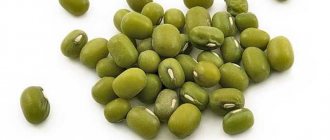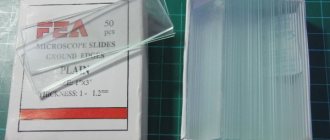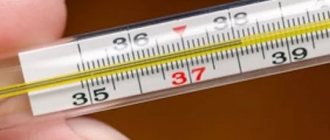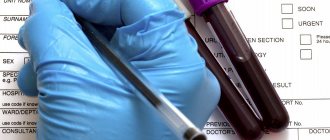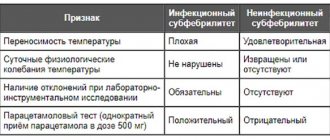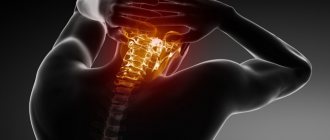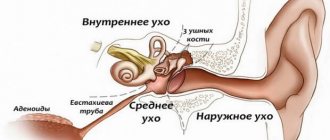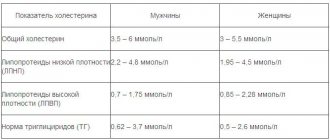The lymphatic system in the human body is represented by millions of the finest vessels and capillaries and a kind of “depot” in which painstaking work is in full swing to neutralize and dispose of aggressive elements (infections, viruses, protozoa, foreign objects, etc.) - lymph nodes. Thus, the lymph nodes in the groin are responsible for neutralizing “aggressors” in the lower part of the body - legs, pelvic organs, while the cervical lymph nodes are responsible for “cleanliness” in the head area.
Even this well-functioning system can fail when a person notices enlarged lymph nodes or feels discomfort due to their inflammation. There can be many reasons for this - from banal hypothermia, an unnoticed wound on the foot, to a serious inflammatory process in the pelvic organs.
Causes of inflammation of the lymph nodes in the groin
Lymphadenitis is a reaction of the lymphatic system to the introduction of pathogenic microorganisms or toxins. Normally, lymph nodes, including the inguinal ones, cannot be palpated. Inguinal lymph nodes guard the health of the pelvic organs and lower extremities. When an infection occurs, often with blood or lymph from the primary focus, the synthesis of lymphocytes is activated, the purpose of which is to fight pathogenic aggression. In this case, the lymph nodes increase in size and are detected by palpation.
Depending on the location of the inflammatory process, different groups of lymph nodes in the groin increase:
- The upper lymph nodes, located in the upper corners of the inguinal triangle, are responsible for the gluteal region, the lateral surface of the torso and the abdomen;
- The middle cluster (in the middle of the inguinal folds) reacts to diseases of the genital organs, bladder and rectum;
- The lower lymph nodes, located closer to the perineum, become inflamed in diseases of the legs.
The causes of inflammation of the lymph nodes in the groin in women include:
- Skin trauma - cuts when shaving the pubis, cat scratches (even with the slightest damage, inflammation is caused by Bartonella), bruise of the groin area, damage and injuries to the legs (fractures, stab wounds);
- Purulent inflammation of the skin in the groin or extremities - most often provoked by streptococcus, staphylococcus, E. coli;
- Allergic reaction - the use of new intimate hygiene products, as well as as a side effect of taking certain medications (penicillins, sulfonamides, chemotherapy drugs, cephalosporins, finlepsin, etc.);
- Viral diseases - severe flu in a woman with a weakened immune system, rubella, genital herpes (including Epstein-Barr virus infection), measles;
- A nonspecific infection of the genital organs - thrush, especially in the acute period, as well as inflammation of the vulva or Bartholin glands (bartholinitis) can provoke regional lymphadenitis in the groin;
- Sexually transmitted diseases - ranging from syphilis and chlamydia, which occur with pronounced primary symptoms, to gonorrhea, chlamydia and ureaplasmosis with a hidden or asymptomatic clinical picture;
- Non-inflammatory diseases of the female genital area - ovarian cysts (enlarged inguinal lymph nodes are a characteristic symptom), hormonal imbalance;
- Pathology of the urinary organs - chronic cystitis/urethritis, stones in the bladder (when passing through the urethra they damage the mucous membrane, causing an inflammatory reaction), pyelonephritis;
- Specific infection - tuberculosis, cytomegalovirus, mononucleosis, HIV, toxoplasmosis;
- Diseases of the lower extremities - arthritis of the hip/knee joints, erysipelas, trophic ulcers;
- Reaction to surgery - especially often lymphadenopathy (non-infectious lymphadenitis) occurs after operations on purulent foci (gangrenous appendicitis, peritonitis, suturing a dirty wound on the leg, etc.), as well as when an implant is rejected during genital plastic surgery;
- Oncological diseases - lymphogranulomatosis (Hodgkin's lymphoma), malignant neoplasms of the rectum and genital organs, lymphosarcoma, metastases to the pelvic organs.
Important! Inflammation of the lymph nodes in a child can periodically occur during the period of active growth. A teenage girl may complain of soreness in the groin due to simple lack of personal hygiene.
Inflammatory diseases (lymphadenitis)
Very often, if the lymph node in the groin of women is inflamed, the causes are identified as follows: contamination and infection, bacteria or viruses.
Some of them cause inflammation - lymphadenitis, which can expose a person to tuberculosis, syphilis and even plague.
Lymphatic tuberculosis in many cases appears in males. This disease is divided into groups of acute and chronic diseases. If you look at the characteristics of inflammation, they can also be serous and purulent.
Characteristic symptoms
Lymphadenitis can be unilateral or bilateral, single lymph nodes or groups become inflamed. Usually the process begins with serous inflammation, but lack of treatment (elimination of the cause) can lead to suppuration and the formation of adenophlegmon. Inguinal lymphadenitis is characterized by:
- An increase in the diameter of the lymph nodes to 1 cm or more (normally up to 0.7 cm, with disease they can reach the size of a quail egg);
- Soreness - absent at rest, but quite pronounced during palpation (palpation) and walking;
- Changes in the skin over the lymph node - redness, increased local temperature, the skin becomes tense, peels and itches;
- General symptoms are most pronounced at the stage of lymph node suppuration: body temperature rises, the patient notes weakness and headache, lack of appetite, weight loss.
Chronic lymphadenitis is characterized by mild symptoms, but periods of exacerbation occur rapidly, and the lack of treatment contributes to the formation of fibrous inclusions in the lymph nodes and a decrease in their functionality.
Surgical treatment
Surgical intervention is justified in the case of local damage to the lymph nodes without the development of a systemic process. The operation is performed under local anesthesia. Depending on the severity of the process, either the abscess is opened and drained, or the irreversibly changed lymph nodes are excised.
Properly performed surgical or conservative treatment will ultimately lead to the patient’s recovery.
Lymph nodes in the groin provide drainage of lymph from the pelvic organs. This is a large group of lymph nodes with a superficial location, making them quite easy to palpate. Lymph nodes in the groin can become enlarged and inflamed due to various pathological processes, which is manifested by specific symptoms. First of all, this group of lymph nodes reacts to inflammatory and infectious diseases of the genitourinary system. Therefore, disturbances in the normal state of the inguinal lymph nodes are an alarming symptom and a reason for urgent consultation with a doctor.
Features of inflammation of the lymph nodes in women
Depending on the type of infection that caused inflammation in the groin, the following symptoms appear to varying degrees: soreness, density and mobility of the lymph nodes.
- Inflammation of the lymph nodes during pregnancy is often caused by chronic diseases - colpitis, inflammation of the appendages, thrush. Due to the weakness of the immune defense, even banal hypothermia of the legs can provoke an enlargement of the inguinal lymph nodes.
- With syphilis, the lymph nodes enlarge 5-10 times, but are completely painless, and there is no redness of the skin. In addition, syphilis at the initial stage (40 days after infection) is characterized by the appearance of chancre - a painless ulcer that does not heal for about 1 month.
- Although gonorrhea in women often occurs in an erased form, in most patients the inguinal lymph nodes increase in diameter to 2 cm. Dense formations are mobile (roll under the skin) and are very painful. Often the inflammation also affects nearby lymphatic vessels: they can be felt in the form of painful dense cords in the inguinal folds.
- In infectious mononucleosis, inguinal lymphadenitis is combined with inflammation of other groups of lymph nodes (cervical, axillary, etc.). In this disease, enlarged lymph nodes with a diameter of 2-3 cm create a kind of chain. Dense and non-adhesive lymph nodes to the skin do not cause significant pain upon palpation. There are no inflammatory signs on the skin - redness, itching, slight swelling over the affected group of lymph nodes is possible.
- With genital herpes, in which very painful watery blisters appear on the genitals, the lymph nodes, on the contrary, give only minor pain upon palpation. The skin over them is practically unchanged, the lymph nodes themselves are soft (the consistency is similar to dough), and are not fused with the surrounding tissues.
- Cytomegalovirus - with this disease, the inguinal lymph nodes are less enlarged than other groups (axillary, occipital, etc.). Unlike mononucleosis, with cytomegalovirus infection, a single slight increase of up to 1 cm in diameter often occurs, and the pain is moderate.
- Inguinal lymphogranulomatosis is the result of chlamydial infection through sexual contact. In one inguinal fold a string of enlarged lymph nodes appears, which merge to form a single tuberous area. Pain increases as the disease progresses. As a result, the festering lymph nodes are opened, forming a fistula on the skin.
- With erysipelas, which often develops on the legs, the inguinal lymph nodes are very painful, but the skin over them is not changed, their mobility is preserved.
- Borreliosis is a disease caused by a tick bite. Simultaneously with inguinal lymphadenitis, a hyperemic bite area can be detected in the lower part of the body (pelvis, legs).
- Lymphadenopathy (enlarged lymph nodes occurs without inflammatory signs on the skin), caused by oncopathology, is characterized by the absence of pain in the area of enlarged lymph nodes and their adhesion to surrounding tissues (immobile).
Important! If inflammation of the lymph nodes in the groin develops for more than 14 days, this is a good reason to visit a medical facility.
Non-inflammatory diseases (lymphadenopathy)
With each increase and if the lymph node in the groin suddenly becomes inflamed in women, the reasons may differ. Different types of lymph inflammation imply different sources of occurrence.
For example, in this case, tissues are saturated with those cells that can cause pathologies. This disease can occur as a result of leukotic disorders.
Then the lymph nodes have elasticity or density. They may hurt, but not much. Lymphadenitis can occur in both adults and children.
Muscle lymphadenopathy can be caused not only by the penetration of cancer cells into the tissues. The reasons why lymph nodes become enlarged can be tumors in the buttocks and lower back, groin cancer in women and other inflammatory processes.
Lymphadenopathy is easy to detect due to a significant increase in lymphatic accumulation (it is better to check with ultrasound). The nodes are welded to other surrounding elements. They are tight and don't hurt. It is immediately clear that in this case it is necessary to treat the underlying disease.
Worth paying attention! If leukemia occurs, then lymphadenopathy can spread not only to the inguinal, but also to other thickenings of the lymph nodes. Lymphogranulomatosis may also appear, due to which some accumulation begins to gradually grow, which does not hurt when enlarged.
Read the new article in the section: Gallstone disease: treatment without surgery and diet
Which doctor should I contact? Diagnostic plan
Since the main cause of inflammation of the lymph nodes in the groin is an infection, if detected, a woman is recommended to first consult a gynecologist or dermatovenerologist.
If a sexually transmitted infection and nonspecific inflammation of the vagina and uterus are excluded, the woman is referred to a therapist, who will prescribe an initial set of examinations. If necessary, he will refer you to a surgeon, oncologist or infectious disease specialist.
The following diagnostic studies and tests may be performed:
- gynecological examination and smear taking;
- Ultrasound of the pelvic organs;
- general blood test (increased ESR, leukocytosis), tests for rheumatism and serology;
- Analysis of urine;
- comprehensive blood test for infections - HIV, hepatitis, syphilis, toxoplasmosis, etc.;
- with obvious signs of suppuration and to exclude metastatic lymphadenopathy - lymph node biopsy;
- if a severe pathology is suspected (cancer, cyst rupture) - CT, MRI.
Conservative treatment
There are local and systemic treatment. It is not practical to treat many types of inflammation of the lymph nodes in the groin with local remedies, since this is a general reaction to a microbial agent that has penetrated inside the human body. Therefore, most often the doctor prescribes systemic drugs to not only reduce inflammation of the lymph nodes in the groin, but also to stop the infectious process throughout the body.
Inflammation of the lymph nodes in the groin should be treated using the following medications:
- antibiotics (mainly with a wide spectrum of effects);
- antiviral drugs;
- agents with anti-inflammatory effect;
- homeopathic medicines (sometimes they are equated with folk medicines).
It must be emphasized that each of these groups of medications has its own advantages and disadvantages, as well as characteristics of its effects. A mandatory component of successful therapy is a certain duration of use of the drug. Only a specialist can take into account all these details.
Antibiotics
Antibiotics have a systemic antimicrobial effect, that is, they are capable of destroying microorganisms anywhere in the human body. When an antibacterial agent is administered intramuscularly or intravenously, the active substance immediately enters the bloodstream and lymphatic vessels.
All antibiotics are divided into two large groups according to their mechanism of action: bacteriostatic and bactericidal.
Treatment with bactericidal antibiotics is only possible in combination with massive infusion therapy, since the breakdown of microbial cells releases a whole range of toxins and other substances that are dangerous to humans. Bactericidal antibiotics act more quickly and strongly than bacteriostatic ones. Bacteriostatic drugs are less active, but safer in terms of possible side effects.
Any antibiotics that involve eliminating inflammation in the area of the inguinal lymph nodes should be prescribed taking into account the sensitivity of microorganisms to them. This feature is established on the basis of a special study (antibioticogram) or based on general knowledge about a specific pathogen.
Inflammation in the area of the inguinal lymph nodes can be treated using the following means:
- penicillin, if we are talking about syphilis;
- doxycycline (cat scratch disease and rat bite disease);
- streptomycin (plague bubo);
- macrolides (azithromycin) or cephalosporins, if the suspected microbial agent has not been identified.
To achieve a positive effect of antimicrobial therapy, a sufficiently long-term use of such drugs in medium or high dosages will be required. Their irregular use will only cause the microbial agent to become addicted to the drug and reduce the achieved effect to zero.
In some cases (with purulent melting of the inguinal nodes), powerful antibiotics are used as local remedies: as a component of an ointment or gel. The ointment is applied to a gauze pad and applied to the inflamed lymph nodes. Regular dressing changes are required, especially if pus leaks. It is not recommended to combine antibacterial ointments and folk remedies.
Antiviral agents
Their use is advisable only if the viral etiology of inflammation in the area of the inguinal lymph nodes has been established. Antiviral drugs have a fairly wide range of possible side effects, so their prescription should be especially balanced.
Most often there is a need to use antiviral drugs (acyclovir, valacyclovir) for the following diagnoses:
- Infectious mononucleosis;
- herpes infection (virus types 1, 2, 6);
- cytomegalovirus infection.
The use of drugs with an antiviral effect as an additional remedy (“just in case”) is not recommended, since the minimum expected benefit is not comparable to the likelihood and severity of side effects.
Anti-inflammatory drugs
It is almost impossible to treat inflammation in the area of the inguinal lymph nodes only with anti-inflammatory drugs. NSAIDs have the property of reducing the severity of all signs of inflammation, such as pain, local fever, swelling, and dysfunction. On the other hand, anti-inflammatory drugs do not have any significant effect on the microbial agent itself, so the infectious process continues.
The following drugs are most effective for reducing inflammation of the inguinal lymph nodes:
- indomethacin;
- ibuprofen;
- nimesulide;
- diclofenac.
The possibility of combined use of NSAIDs and, for example, antibiotics should be checked with your doctor. The use of several active substances from the NSAID group is strictly prohibited, as the risk of side effects increases.
Homeopathic remedies
The effectiveness of homeopathic medicines is not recognized by all doctors. Many experts mistakenly believe that folk remedies and homeopathic remedies are one and the same. This judgment is incorrect, although in both cases it is impossible to establish the mechanism of action of a particular drug.
Homeopathy is a type of alternative medicine that uses low concentrations of substances that cause the development of disease in large doses. The popular trend in medicine is the use of plants and animal products. In many cases, inflammation in the area of the inguinal nodes can decrease under the influence of folk or homeopathic remedies, but it is impossible to be sure of success.
How are swollen lymph nodes treated?
The only correct tactics for treating inflammation of the lymph nodes in the groin is therapy for the underlying disease that provoked the enlargement of the lymph nodes.
- Depending on the nature of the disease, antibacterial, antiviral, and antifungal drugs are prescribed. The choice of medication, dose and duration of treatment are determined by the doctor!
- The use of home remedies (warming, rubbing, etc.) can accelerate suppuration of the lymph nodes, and in some cases they are simply unacceptable (!).
- Local therapy - the use of Vishnevsky ointment, Levomekol and antiseptic lotions - is advisable only in combination with the systemic use of antibiotics.
- Physiotherapy - electrophoresis with an antibiotic, UHF - are prohibited for purulent lymphadenitis.
- Surgical treatment - surgical excision is carried out only in case of suppuration of the lymph nodes and the formation of fistulas.
Forecast and prevention of inguinal lymphadenitis
Timely identification and treatment of the causative disease guarantees the elimination of lymphadenitis. However, enlarged lymph nodes may persist for up to 2 weeks. after completing the antibacterial course. As preventive measures, a woman is recommended to:
- Maintain personal hygiene, carefully choose intimate products (depilatory cream, gels, soap).
- Support immunity, sanitize chronic foci of infection, including in the oral cavity.
- Have gynecological examinations regularly. Treat thrush and maintain normal vaginal microflora, while avoiding douching, which many women “sin” with.
- If possible, exclude infection with sexually transmitted infections - practice protected sexual intercourse, avoid casual relationships.
Tags:
women's health lymph node
Treatment with folk remedies
The use of folk remedies for inflamed groin lymph nodes is unacceptable without medical advice. Many serious diseases, including sexually transmitted diseases, cause inflammation and suppuration in the inguinal lymph nodes. To avoid complications, never apply warm compresses or heat the inflamed areas of the groin.
Echinacea tincture
. It is recommended to drink it for any inflammatory processes in the body, including groin lymphadenitis. The tincture has anti-inflammatory and strengthening properties. Dilute 20-25 drops of echinacea tincture in water and drink it 2 times a day. It is advisable to do this before breakfast and dinner.
Herbal compresses
. Take herbs that have antibacterial and anti-inflammatory properties (chamomile, nettle, mint, dandelion flowers, calendula). Pour boiling water over them and leave until cool. The proportions are approximate: enough water is needed to slightly cover the medicinal herbs. Apply compresses (but in no case, not hot ones!) on the affected lymph node. To do this, you can soak gauze in the resulting liquid and apply it to the painful area.
When choosing recipes to use for inflammation of the lymph nodes, use common sense. Without basic drug treatment of the root cause, any folk remedy for an active inflammatory process will be powerless.
Inspection
When visually examining a patient, the doctor must carefully examine the size of the lymph node and its mobility. The following signs may indicate acute inflammation:
- pain in the lymph node upon palpation;
- swelling of the tissues that are located next to the inflamed lymph node;
- the lymph node is motionless due to the fact that it has fused with neighboring tissues;
- dense consistency of the lymph node;
- bright red color of the skin over the lymph node.
If the doctor discovers that there is softening of the tissue in the center of the lymph node, then this is a sign of the formation of purulent masses inside the node. When a purulent abscess is independently opened in the groin area, phlegmon is formed - a compacted zone without clear boundaries. Pus may be released through the fistula tracts.
When a tumor forms, inflammation in the lymph node is mild:
- the skin over the lymph node does not differ in color from the rest of the skin;
- the lymph node is not connected to adjacent healthy tissues;
- there is no pain;
- On palpation the lymph node is hard.
Prognosis, complications
In most cases, the prognosis is favorable, but subject to timely and adequate treatment, which must be completed completely and strictly in accordance with the instructions of the attending physician.
The danger of inflammation of the lymph nodes in the groin lies in the risk of developing the following complications:
- skin abscess - the cause is purulent melting of the tissue of the node and the surrounding tissue;
- sepsis - progression of a purulent process and damage to blood vessels due to the entry of a pathogen into the bloodstream;
- damage to the brain, meninges: meningitis, encephalitis;
- gangrene;
- osteomyelitis;
- lifangitis - an inflammatory process in the lymphatic vessels;
- necrosis of adjacent tissues;
- involvement of neighboring lymph nodes and the lymphatic system as a whole in the purulent process;
- thrombophlebitis – a combination of an inflammatory process with thrombus formation;
- formation of lymphatic fistulas.
Where are the inguinal lymph nodes located?
Inguinal lymph nodes are localized in the perineum (in the folds between the legs and pelvic region). They can also be felt in the femoral triangle, inside and outside the thighs. A diagram will help you understand where these formations are located.
Layout of inguinal lymph nodes and lymphatic vessels
The location of the inguinal lymph nodes in humans suggests their division into 3 groups:
- in the area of the thighs, lower abdomen and buttocks there is the upper level of glands;
- near the anus, external genital organs - the average level of immune links;
- close to each other, lower level formations are located on the leg.
Lymph nodes located between the groin and thigh can be palpated. In this case, round formations of soft consistency are determined, easily moving under the skin. If they are no larger than a pea, then there is no need to talk about pathology.
The links of immunity in the groin area are deep and superficial. The latter lie in the thickness of the connective tissue of the abdominal wall. The deep glands are located near the femoral vein. They are responsible for filtering lymph coming from the external genitalia and lower extremities.
Diagnostic measures
The lymph node in the groin does not increase on its own. There are a number of reasons for the development of such disorders. First, the doctor determines why the lymph nodes are enlarged and only then begins to choose treatment tactics.
The inguinal form of lymphadenitis is treated conservatively or surgically. The treatment regimen is selected as follows:
- In case of an inflammatory or infectious process in the body, it is necessary to eliminate the disturbances. The lymph nodes then return to normal on their own. No auxiliary measures are required. If we are talking about chronic infections, then we cannot do without antibacterial drugs, vitamin complexes and immunomodulators.
- Catarrhal non-purulent foci are treated with conservative therapy - ultrasound, electrophoresis, antibiotics and compresses.
- Purulent foci are first opened and disinfected. Treatment with antibiotics is mandatory. If necessary, sutures are applied.
- When a fungal infection of the body occurs, there is a need for antimycotic therapy using antifungal drugs.
- In case of STDs, measures are taken to eliminate the infection and restore the body's microflora.
If the malignancy of the lymphatic structures is confirmed, then there is a need to excise the cancer-affected area. To avoid relapses, nearby soft tissues are also removed. Radiation therapy is mandatory.
If the lymph nodes on the right or left in the groin are enlarged, the lymph is checked for the presence of antibodies. A comprehensive diagnosis is required to identify the cause.
Based on the results of the studies, the doctor prescribes conservative or surgical treatment.
Diagnosis of enlarged nodes of the lymphatic system is aimed at identifying the cause. For this purpose, a complex of laboratory tests and instrumental examination is used. Anamnesis collection begins with a survey and initial examination of the patient.
Blood and urine tests can detect the presence of an inflammatory process in the body. The biochemical composition of the blood is studied, and the material is cultured to identify the type of microbes that have affected the patient. In order to more thoroughly analyze the pathology, ultrasound, x-ray, CT and MRI are prescribed. To exclude oncological diseases, cytology, biopsy and histology methods are used.
The following diagnostic procedures are distinguished:
- conducting an initial examination;
- taking a biochemical blood test;
- carrying out bacterial culture of lymphatic fluid;
- examination of prostate secretions;
- study of the composition of seminal fluid;
- performing lymph node puncture.
In some cases, if the lymph node in the groin on the right or left of a man is inflamed, a variety of instrumental methods are used: ultrasound, radiography. If the presence of metastases is suspected, positron emission tomography is performed.
What is prohibited to do
The patient cannot independently prescribe treatment for inguinal lymphadenitis without examining a doctor, taking tests and determining the true cause of the pathology. It is also prohibited:
- use traditional methods when the disease is already pronounced;
- warm the sore spot and massage;
- stay in the open sun for a long time;
- sit in a hot bath, visit the solarium and sauna.
Take care of your health and consult a doctor in a timely manner, this will protect you from unwanted consequences in the form of complications. Health to you and your loved ones!
Carrying out and consequences of Duquesne's operation
Previous post
Signs, diagnosis and treatment of tuberculosis of the intrathoracic lymph nodes
Next entry
Discussion: 2 comments
- Victoria:
01/07/2019 at 12:36Inflammation of the lymph node in the groin area was the result of a boil. The boil has gone away, but the lymph node has not. Hospitalized. I was afraid that they would cut me. But they cured it with antibiotic injections and physiotherapy. So, the main thing is to go to a medical facility in time
Answer
- Alina:
04/06/2019 at 21:18
My inguinal lymph nodes became inflamed after severe hypothermia, and at the same time my thrush worsened. Out of ignorance, I wanted to lie down in a hot bath, but I learned in time that this was absolutely forbidden. I took echinacea tincture.
Answer
Diagnostics
Additional research is a necessary component of diagnosing the cause of the development of inguinal lymphadenitis. To do this, a bacteriological study of material from the area where the infectious inflammatory process is localized and from the lymph node itself is carried out. The resulting material is applied to a special nutrient medium, on which colonies of pathogenic microorganisms grow over a certain period of time. They are then identified by morphological, antigenic and biochemical properties. Also, to select the most effective therapy, the sensitivity of the isolated microorganism to the main groups of antibiotics is determined.
Prevention
It is impossible to ensure that the lymph nodes in the groin area never become inflamed, but you can reduce the likelihood of developing pathology. For this it is recommended:
- use a condom every time you have sexual intercourse;
- treat damaged skin with antiseptic solutions;
- lead a healthy lifestyle (eat right, give up bad habits);
- strengthen the immune system.
If you follow the rules, then, most likely, inguinal lymphadenitis will not bother you. If inflammation of the glands occurs, you should consult a doctor.
What to do if your throat hurts, the lymph nodes in your neck are inflamed and it hurts to swallow
Previous post
Lymph nodes on the labia and pubic area in women
Next entry

